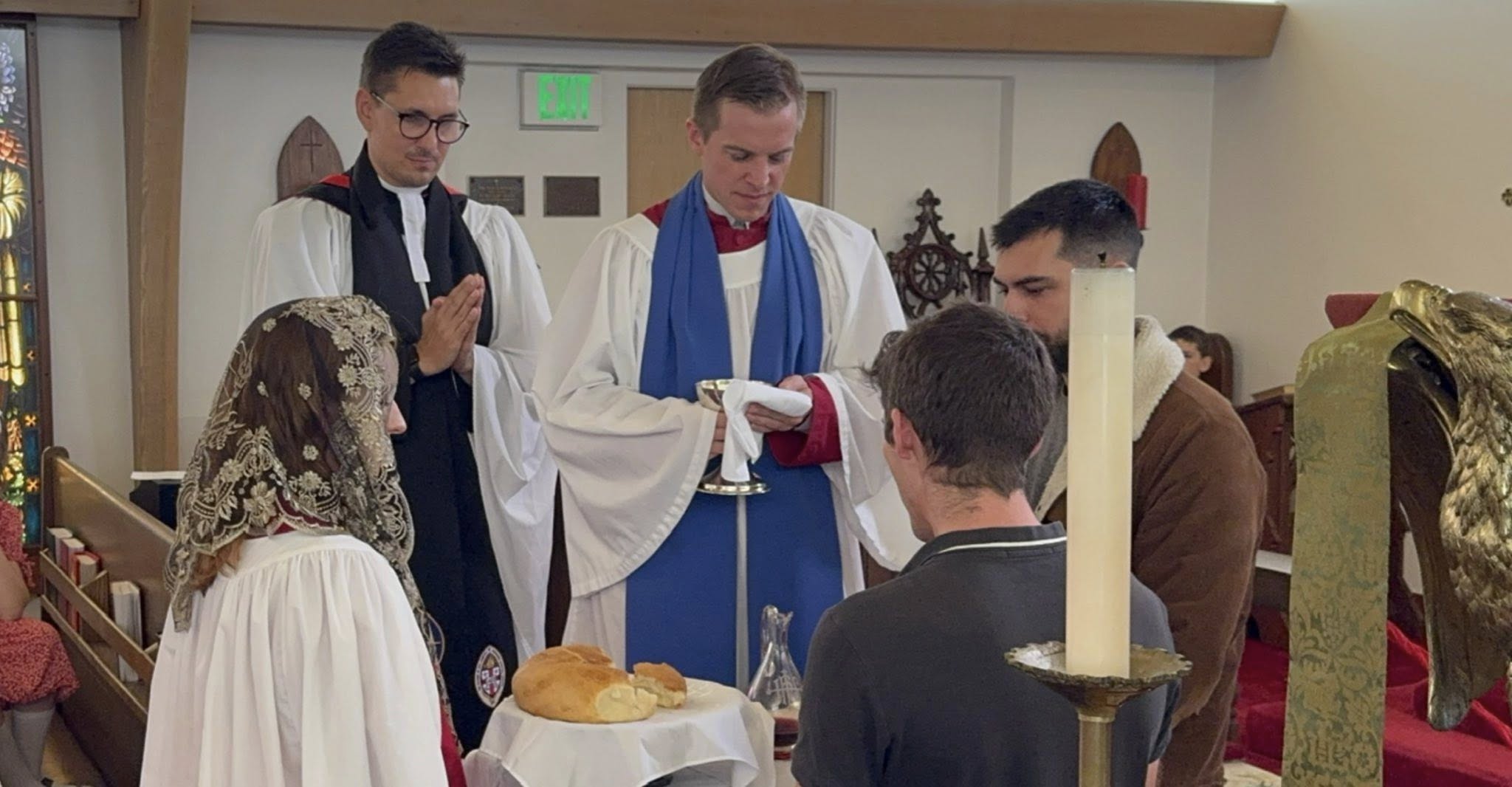For 2025 Reformation Sunday, our parish stepped back nearly five centuries and prayed using the 1552 Book of Common Prayer—the liturgy of the English Reformation at its “Edwardian” reformed moment. Not a historical reenactment, but showing how the Reformed party embraced liturgy and form in a way very different than modern presbyterian or reformed churches.
The Table in the Midst of the People
One of the most visible differences came from the placement of the Holy Table.
Instead of remaining against the east wall, as historic and later custom dictated, the 1552 rubrics expect the Lord’s Table to stand lengthwise in the chancel or choir, with the minister standing at the north side.
The Reformers wanted the congregation gathered around God’s board—a table, altar—emphasizing Christ’s finished work and the people’s shared participation in the Supper. Placing the table out from the wall made the direction of the action unmistakably communal. The priest is not offering the communion away from the people; he is presiding at a meal for the people.
The picture is closer to the idea of Christ as the priest at the right hand of the father’s throne.
Ritual Simplicity and Edwardian Rubrics
The 1552 Communion rite itself differs from earlier English practice in several important ways:
- No prayers addressed to the saints, no vestigial ceremonial from the medieval mass—everything is stripped down to Scripture, confession, exhortation, and thanksgiving.
- The Words of Institution are spoken directly and plainly over the bread and wine, with no manual acts intended to imply a “moment of consecration.”
- Communicants receive kneeling, but the famous Black Rubric (in its original form) clarifies that kneeling expresses humility, not adoration of the elements.
Metrical Psalms Instead of Hymns
Another change from our normal Sunday worship was our music.
Long before Watts, Wesley, or the English hymn tradition took shape, Reformation Anglicans sang metrical psalms—the Psalter put into poetic meter so that the whole congregation could sing the Scriptures together. On Reformation Sunday we followed this practice by singing a metrical psalm to an older tune rather than a later hymn.
The Reformers saw congregational psalm-singing as essential:
- It put God’s Word on the lips of the people.
- It replaced medieval chants that few could understand.
Recovering the 1552 service for a day helps us see our own worship with new appreciation and seriousness.

Leave a ReplyCancel reply